Barbara London: My guests today are the members of CFGNY, an engaging artist collective working at the intersection of art, fashion and identity. Members include Daniel Chew, Ten Izu, Tin Nguyen and Kristen Kilponen, who collectively work across video performance, installation, sculpture and garment making.
The name CFGNY was created as an open-ended acronym that could morph depending upon the context in which the project was being presented. One of the earliest iterations of the name is Concepts Foreign Garments New York, and the group is indeed based mostly out of New York. Their work has been shown at the Japan Society in New York, at the Hammer Museum in LA, the Stedelijk Museum in Amsterdam and at Frieze London.
Daniel, Ten and Tin, thank you for joining me.
Daniel Chew: Thank you for having us.
Barbara London: How did Ten come aboard?
Ten Izu: I can’t speak for KK [Kristen Kilponen], but I think in 2018 or late 2019 I had done some projects with CFGNY, Tin and Daniel, prior to this. I walked in one of the shows. As well, we had a closed conversation specifically about “Asianist,” but more broadly race in the art world.
As Daniel mentioned, the conversation around race within the art world was at a pretty different point; there were a lot more uncertain entry points. I have a background in comparative ethnic studies and visual arts. In late 2019, we had talked about working on some projects together. I already had a separate practice, but was a little bored of working by myself and was interested in doing a collaboration. Then the pandemic happened, so we ended up being forced into being a pod. The rest is history.
Barbara London: And how did you come up with the name?
Tin Nguyen: I think we came up with a name in the same way that we come up with titles and other things for shows. Usually, we will propose ideas to each other. It just came from a list of names that we ended up narrowing down. I don’t remember exactly how we found that acronym; I think it was random, which is the point. We knew that if the name came from this random place, it could continue to evolve and morph into being something different in its future.
Daniel Chew: We often use the acronym CFGNY. Concept Foreign Garments New York is one of the first names, but I would say it’s not necessarily more relevant to all our other names. We constantly are changing what CFGNY stands for. The practice is about collectivity and collaboration. We wanted something that wasn’t any of our names, so that we could be known as a collective rather than as any of our individual names attached to it.
Tin Nguyen: When I think of the name or the acronym, I imagine a gesture of someone hitting random letters on a keyboard. In my mind, that’s where the name comes from. It’s more of this gesture of letters, which we may have made meaning from, but on their own don’t really come from any place in particular.
Barbara London: Does fashion still play a role in what you do? I know it intersects in different ways.
Tin Nguyen: I think fashion will always play a role in what we do, because so much of our project is about identities or people. We wear clothes within our society, so I think fashion will always play a role in thinking about the body or a personhood.
Ten Izu: I also think that fashion clothes are always worn, but styling is always changing, as is the way that we perceive each other. So much of our project is about different types of social networks, whether they’re really broad and legally defined such as race, over the past century; or they’re more specific and local, such as recognizing each other from the downtown art scene and being queer. We talk a lot about fashion as a medium and as a ready-made. Fashion has that kind of breadth to be able to comment on these phenomena of social organizing.
Tin Nguyen: To continue with what Ten was saying, in terms of a timeline with fashion, what’s interesting is we’ve been making clothes for about eight years for CFGNY now. And since we don’t make collections every season, every year, an interesting point is this idea of style and how style circles society. It’s interesting to think about making clothes, but also how it’s perceived in relation to style and what that means and how that continues to cycle. Using fashion as this marker of time, or a marker of idea or aesthetic, is something that feels as if it can continue through our practice in the coming decades.
Daniel Chew: I mentioned that we started by making clothes, but none of us actually come from a fashion background. None of us studied clothes making. We were always approaching making garments as artists, and view it as just one medium in which we work through. It plays a similar role to our work in sculpture, or our work in performance or video and installation. I would say it is really just a medium in which we’re trying to practice.
One thing that we’re always really interested in is how we relate to each other; and fashion just seemed like the most perfect medium in which to not only talk about how we relate to each other, but actually intervene in how we relate, because clothing and garments are literally the material that stands between us and the world. It’s like a material actor on our lives. We like that our art could be lived with as clothes, because we think of it as art, but also functions as clothes, as an everyday object that people actually live with. In the world, our art then creates this aesthetic community that we’re also trying to talk about with our work, like the way in which style can signify allegiance to subcultures, or even how style can be also read as being racial or something how people self-identify or associate themselves with those signs.
Barbara London: A year ago, we met over dinner in Milan, the fashion capital. A few months after that, you had your exhibition at the Sculpture Center, “CFGNY in Residence.” Your work was presented in the cavernous labyrinthian basement. Eager to see you guys again, I went not knowing what to expect. I discovered racks of gorgeous clothes. On weekends you opened up the space to interesting performers, including Avena Gallagher and Patia Borja.
What was most interesting for you about the show?
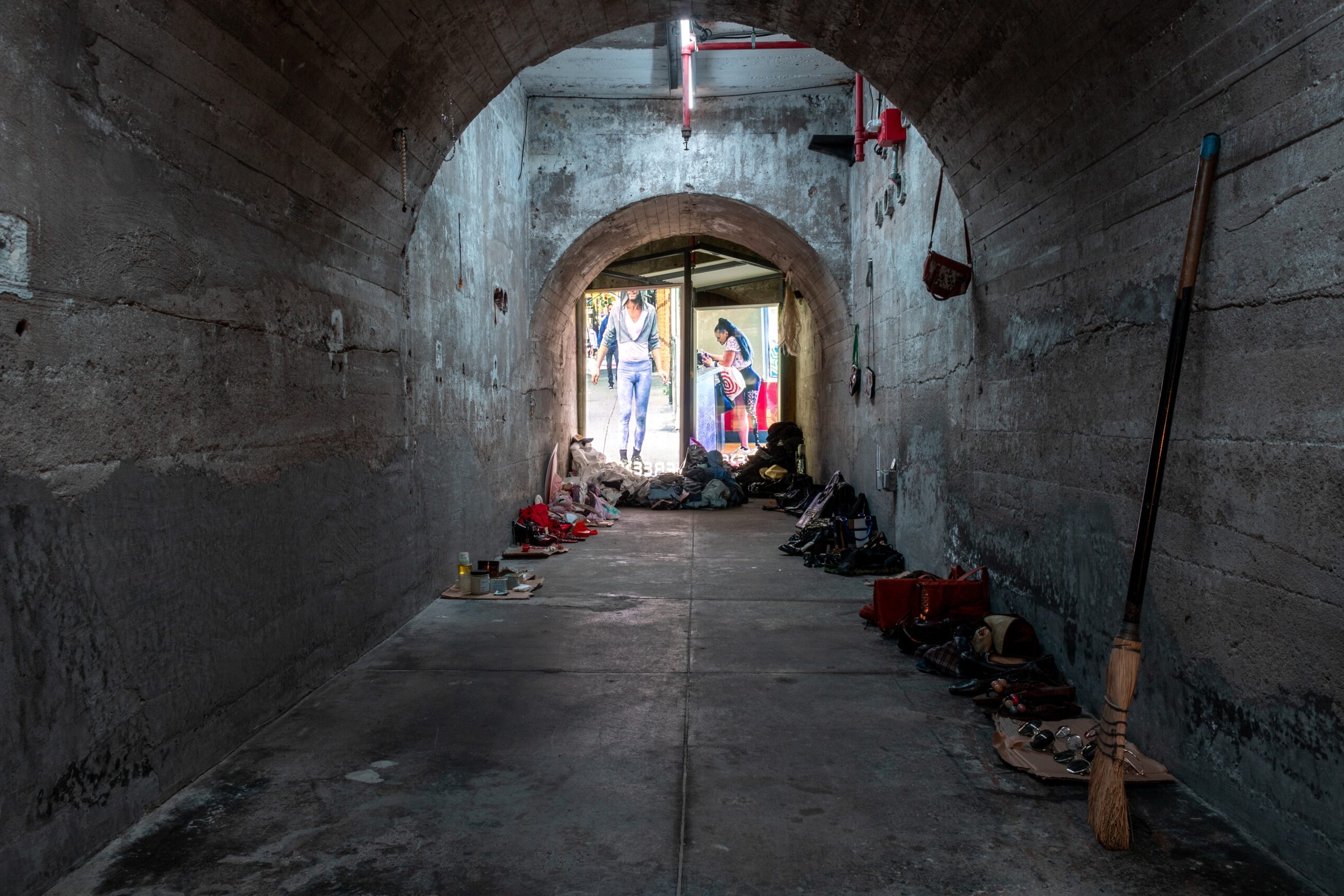
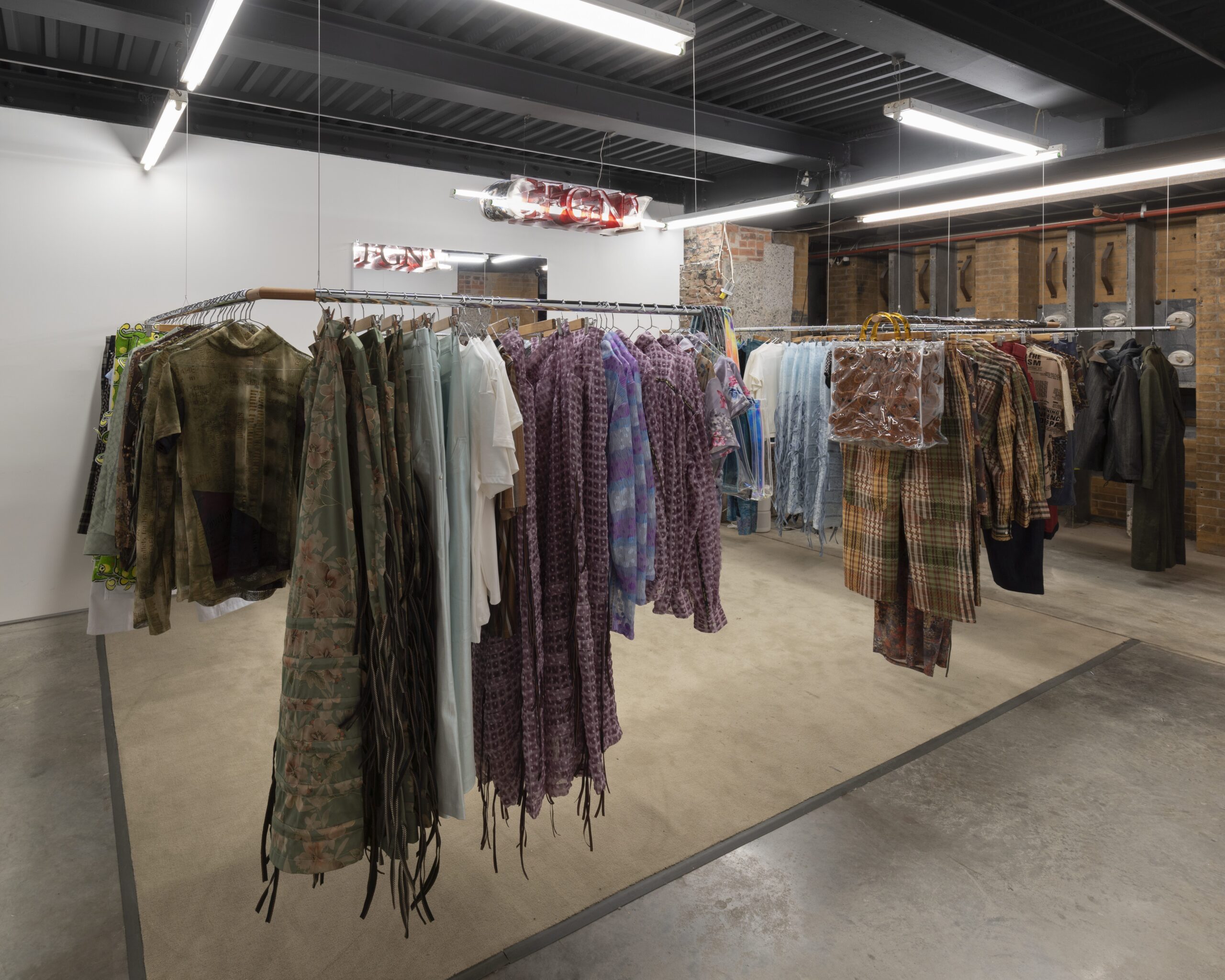
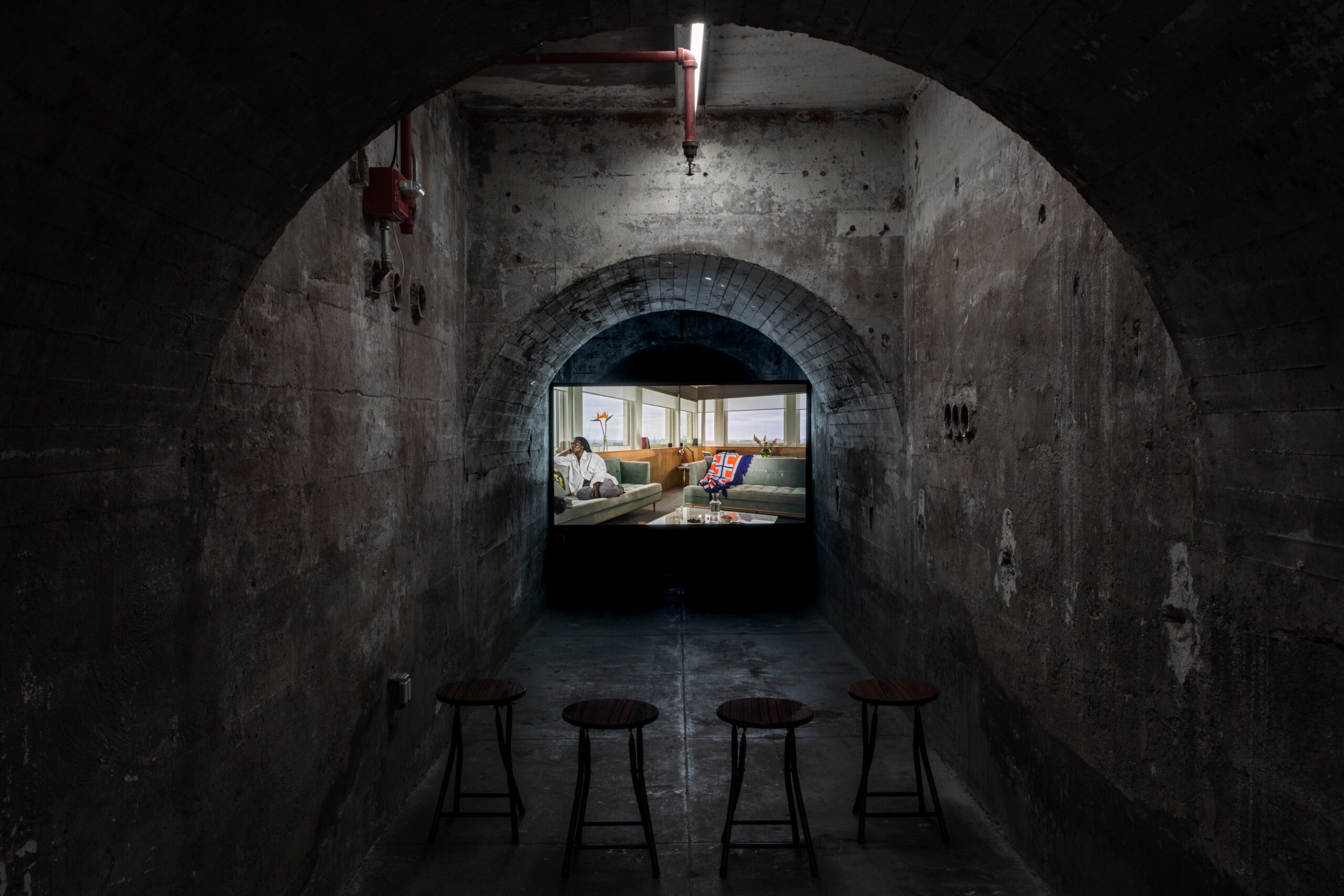
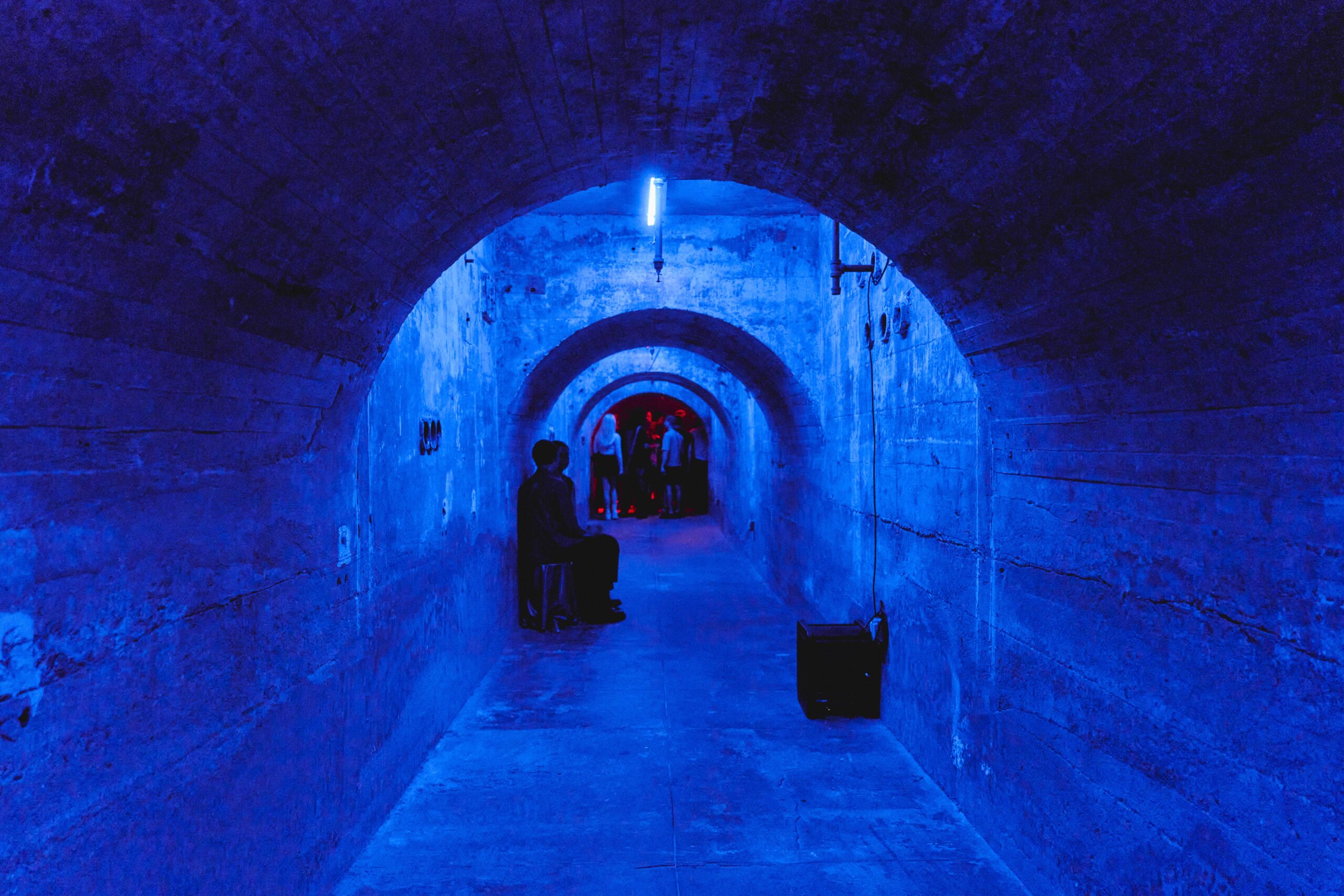
Ten Izu: During that residency, we had a series of four group shows and then one series of sound performances. The pairing of Avena and Patia was just one of those four group show pairings.
Tin Nguyen: In relation to the other projects we’ve done, I think the Sculpture Center project really highlighted the invisible aspects of our practice. It drew a contour around the invisible parts of what we do, which is collaboration, which cycles around a group of people, our community. In the basement, we opened a bar and were bartending, running the clothing store, and then curating exhibitions which rotated every two and a half weeks. Basically, we were gathering people; everyone was hanging out there, drinking a few times a month.
Because we had just been traveling so much, we were also interested in having a home base in New York for that summer. It was nice because we have made many friends, who as a group hover around CFGNY. The exhibition provided an opportunity to spend time with everyone; we definitely became closer with people.
Daniel Chew: There are four core members of CFGNY, but the project is a lot about collectivity and collaboration. Oftentimes for certain projects, we will invite a larger CFGNY community to take part in what we do. Whenever we put on fashion shows, a lot of that labor for the fashion show comes from our community: not only the people who are modeling in the shows, but people who are backstage taking photographs or doing hair makeup or styling. In some sense, we consider the larger group of collaborators in the collectivity of CFGNY.
If you look at the people who are walking for our shows, it’s people that either we are friends with in the community, or people who we’ve wanted to be in community and offered them an invitation to come into the project of CFGNY through taking part in something like a fashion show.
We also do exhibitions that are just art exhibitions, where it’s installation and discreet artworks within a white cube space. For the Sculpture Center space, we didn’t want to do that but activate it as a social space. If you know the architecture of the basement of Sculpture Center, there are four long hallways that are really raw industrial spaces, which are sometimes hard to show artworks in. I think the Sculpture Center realized that and are trying to curate projects down there that have more of an activation side to them, where it’s more about bringing people downstairs and are together in the space. We were the guinea pigs for their initial programming in that way.
Barbara London: Ever since the Sculpture Center landed in Long Island City, seeing shows there brings surprises. For example, as I was leaving your show, Tin said, “Wait a minute, there’s something you didn’t see!” He called attention to your small discrete sculpture made of cardboard hanging on the wall, like an extra thought, nicely mimicking the building’s architecture. It was an addendum, and a signature of what you do.
Let’s move on to what is different about having an exhibition in a white cube gallery space. This past June, July, August, you had a show at The Hammer Museum in Los Angeles. You called it “Refashioning,” and it was a joint exhibition with the Tokyo-based fashion designer, Wataru Tominaga, and was organized by and first presented at Japan Society in New York. The show featured many things: tables, structures, photographs, stuffed animals. In what way was the show about Japanese American culture and why the two-city show?
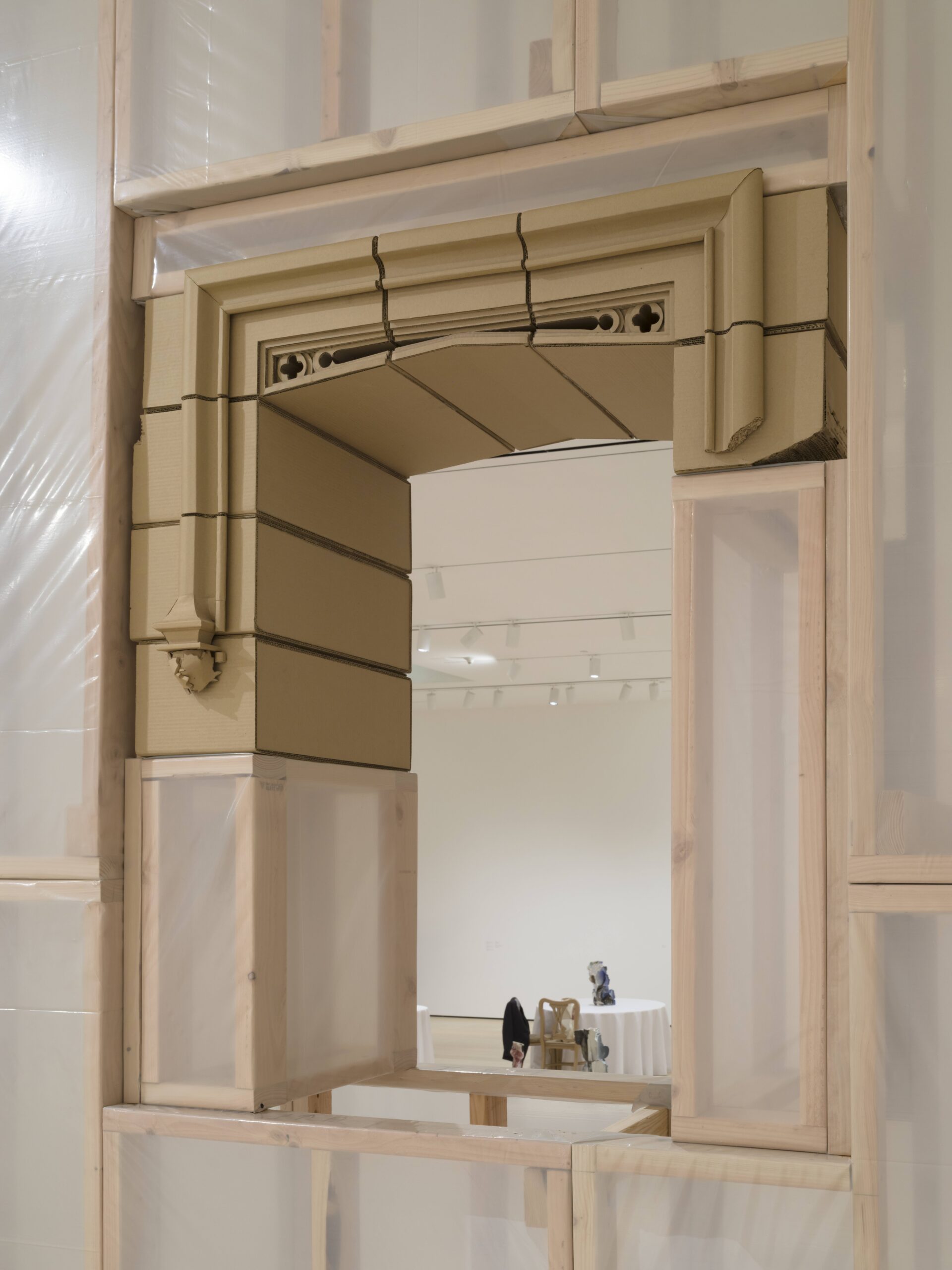
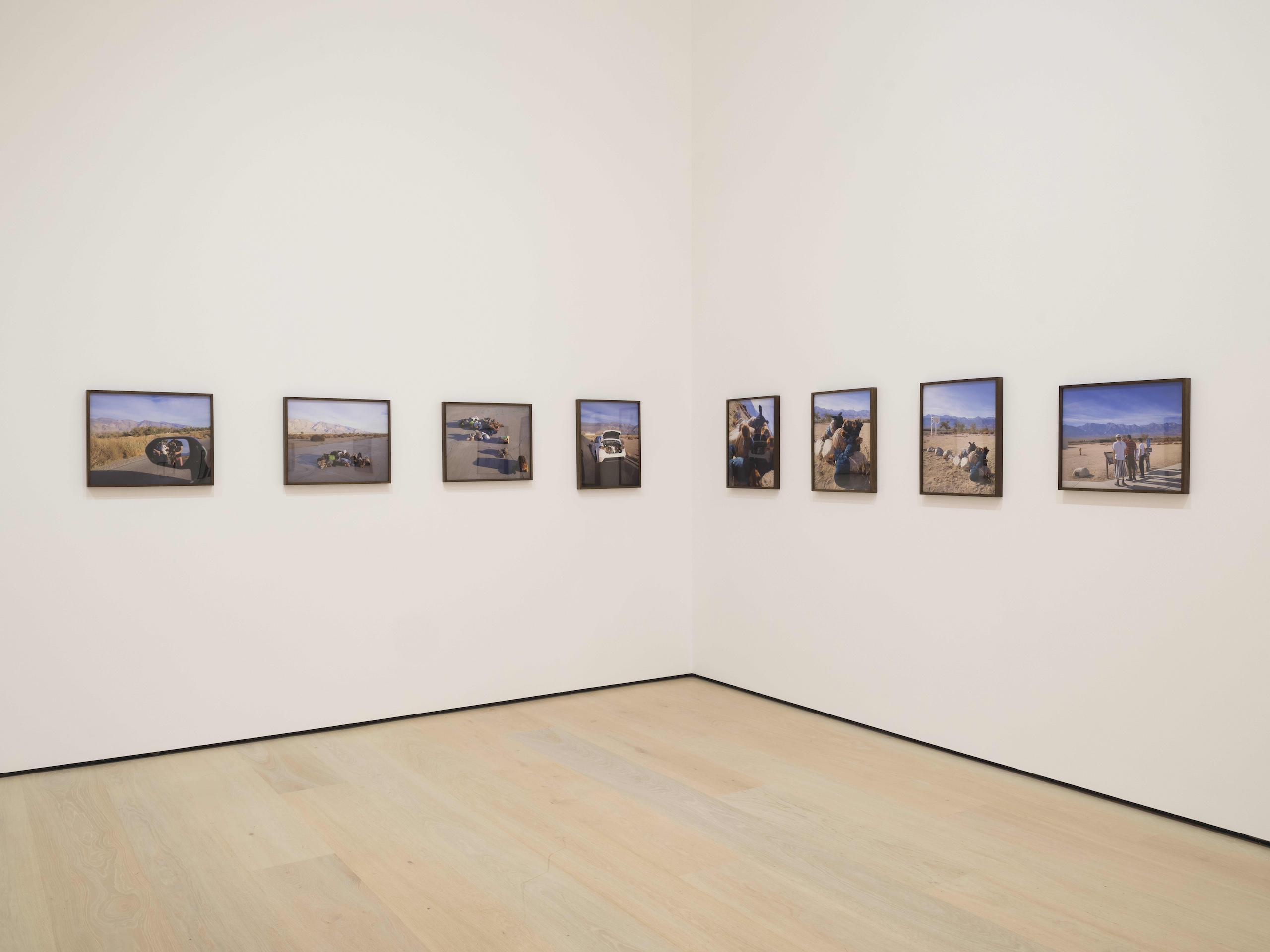
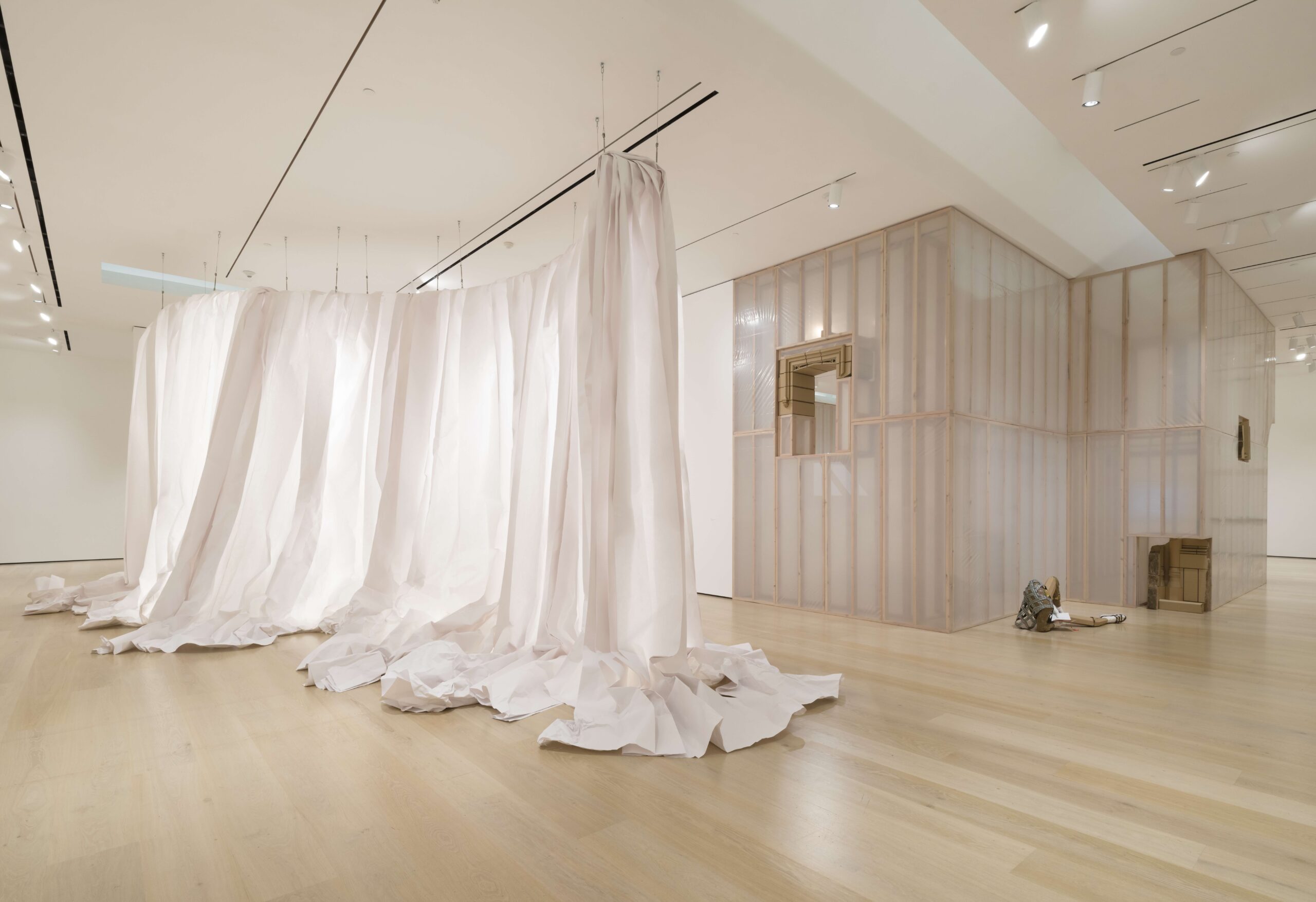
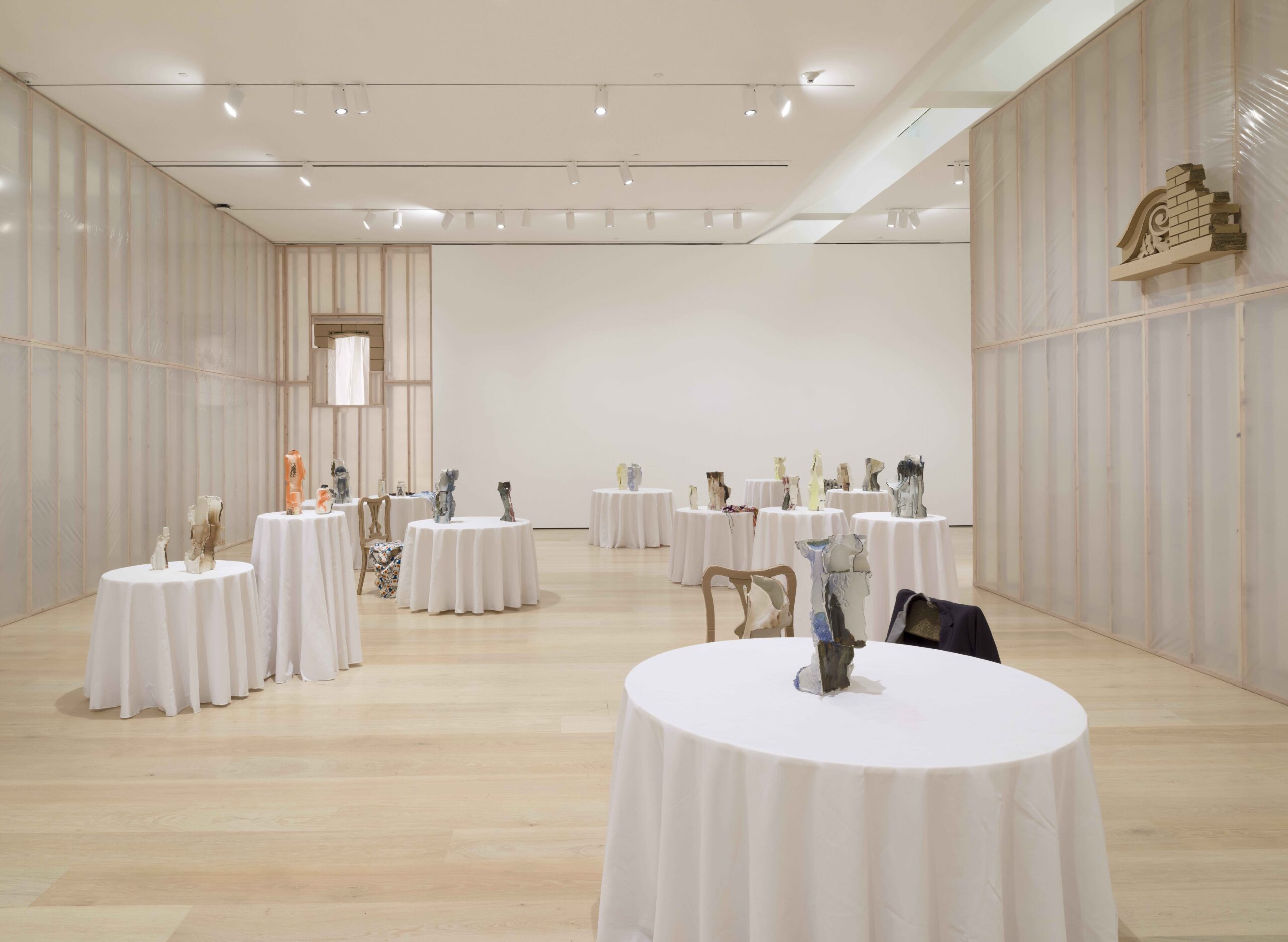
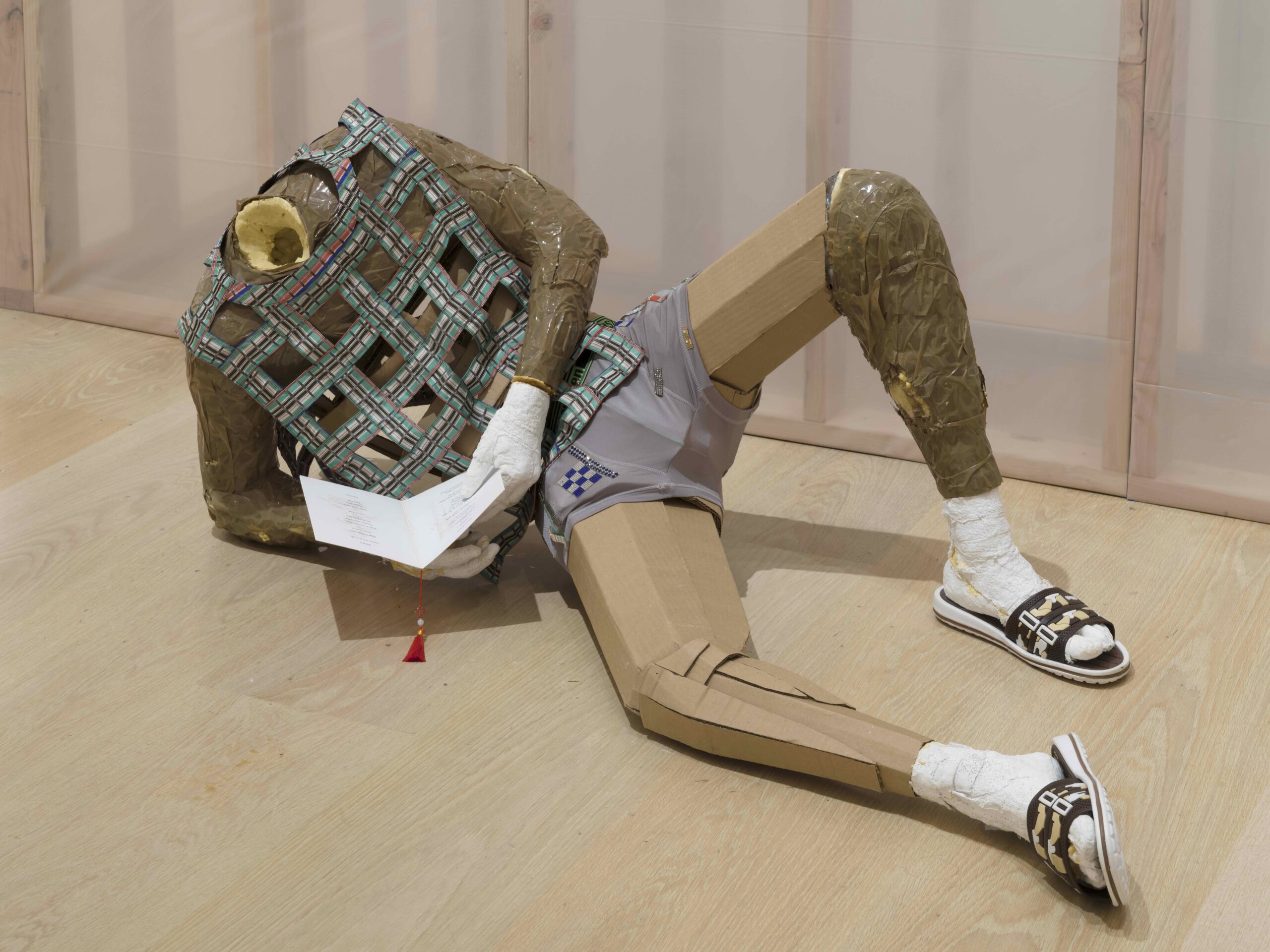
Ten Izu: The show opened in late 2022 at Japan Society New York and then traveled to the Hammer, which has twice the physical space. For the second iteration, we were again paired with Wataru, who also produced new work for the second version of the show.
It’s important to contextualize the New York version, which was about Japanese culture. When we were invited to do the show at Japan Society, our first question was, “What is Japan society?” It’s a pretty famous organization in New York and a lot of people have at least heard of it, but don’t know whether it’s a branch of the Japanese cultural ministry. There is a film and a performance program, a language program, art galleries, business lectures, among other activities.
After we asked what Japan Society is, we gained access to its archives. We found that it’s an American cultural organization that started at the turn of the century to further American business interests in Japan. So that was our starting point for our research there.
As our collective is always circling around this idea of the vaguely Asian, that was very interesting because we are always interested in different ways that race is continuously produced. Starting around 1907, Japan Society seems to have played a significant role in producing the idea of Japanese-ness to an elite East Coast audience, through high society luncheons and dinners and visiting dignitaries [inaudible 00:15:25] from Japan.
The body of work that we produced for the New York show revolved more around the society and business aspects of what Japan Society was producing: an idea of elite genteel Japanese-ness for an elite American white audience. When we were invited to move the show to The Hammer, California has a very different history of Japanese in America. So, we wanted to expand the show to address a totally different lived experience, other than the narrative that Japan Society New York was producing.
Tin Nguyen: When we had gone through the archive at Japan Society, we found a quote that basically said the history of Japanese in America; on the West Coast it is a history of the working class. Since the project at Japan Society was so much about this group of elite business people who were interested in creating ties with Japan, we wanted to make the West Coast show more about that quote we had found. And so we did further research into the history of the Japanese in America.
We went to UCLA and spent time in the library in the Asian American Studies section [inaudible 00:16:35] in their archive. That was the beginning of the work we did for the Hammer exhibition. A lot of what is archived has to do with thinking about or collecting information around the internment that had happened in the US for about four years. Most of the work we made for the Hammer touches upon that, because so much of the archive accounts for information from the families.
Daniel Chew: When we were doing research in the Japan Society archives, there was no mention of internment, because internment did not affect the people who made up the leadership of Japan Society; Japan Society was basically all white people. That is basically what the show was.
On the West Coast, our research traced the same time period as the founding of Japan Society, from 1907 until now. In 1907, the only large Japanese population that existed in the US was either in Hawaii or on the West Coast; the area around L.A had a large Japanese population. We were tracing through the two different archives, one on the West Coast and one on the East Coast during the same period; the idea was to track down the different conceptions of Japanese-ness that was produced by each archive.
Ten Izu: An important point to mention is that the Japan Society Archive produced a very contained and super distilled narrative of what Japanese-ness was. When you compare that with the lived experience of several 100,000 people over many decades, there is no clear narrative, no crystallized Japanese-American experience. We knew there’s no way to narrow this extremely large, very messy group of people who had different experiences throughout this time period.
Daniel Chew: I think the Japan Society show, which was also at The Hammer, was mostly porcelain along with our work in cardboard, which you mentioned before. Our interest in porcelain is in reference to porcelain historically being an important trade object between Asia, specifically China and Japan, and the US. And as an object, porcelain has been in the American imagination for a very long time and has created a sense of what Japan or China is.
As you mentioned, our Hammer portion of the show consisted of photographs of a lot of stuffed animals. In our practice we make a lot of stuffed animals, not only as an exploration of this idea of cuteness as a cultural export, which is associated with not only Japan but Asian-ness in general; but we use the stuffed animals we make as a stand-in for representing Asian-ness, but not through having physical bodies present.
Tin Nguyen: We took the series of stuffed animals to a handful of historical sites on the West Coast with connections to Japanese history. This included Angel Island, Terminal Island, which had a Japanese community that had lived there pre-internment, and in Little Tokyo Suhiro Cafe, which has been open since the ’70s.
The series of photographs consist of images of the stuffed animals that are taking a pilgrimage to the historical sites. For these, we collaborated with the photographer Alan Miyatake. He is the grandson of the photographer, Tōyō Miyatake, who had taken and published many early photos of internment life in 1942, doing this illegally. We found many of his images in the archives.
After internment, for decades Tōyō Miyatake continued to run his photo studio in Little Tokyo, and would take photos of other families and people who had been interned. Eventually his grandson , Alan, took over the studio.
We wanted to work with the photo studio, thinking about it as a living archive. We commissioned Alan Miyatake to take portraits of some of the stuffed animals we just spoke about.
Ten Izu: The images that Tōyō Miyatake took during his time while incarcerated at Manzanar are extremely famous; they’re the most famous images of life during incarceration taken alongside Dorothea Lange, who is government approved, as well as Ansel Adams. However, we were interested specifically because of the continuity of Tōyō Miyatake’s practice in documenting these lived experiences of ordinary people.
That’s something that as a collective we’re always interested in working around. It’s this impulse to create an exceptional narrative about either a singular artist or even a people, which is the vaguely Asian thing. It’s like we’re interested in what is this unexceptional reality that we live in together.
Barbara London: That’s a good segue to go to your current work, which is on view at the Cooper Hewitt as part of the design triennial. You continued to do serious research, this time with the Cooper Hewitt archives. The space you were allocated is the Teak Room, a famous room designed by Lockwood de Forest in 1902. For twenty years, Lockwood de Forest had been the business partner of Louis Comfort Tiffany. Both gentlemen were fascinated by India and both belong to the late 19th century aesthetic movement, which desired to escape the ugliness and materialism of the industrial age. I am fascinated by what you did in the Teak Room. I want to know why you covered most of the carved teak and left only a little bit in the corner exposed.
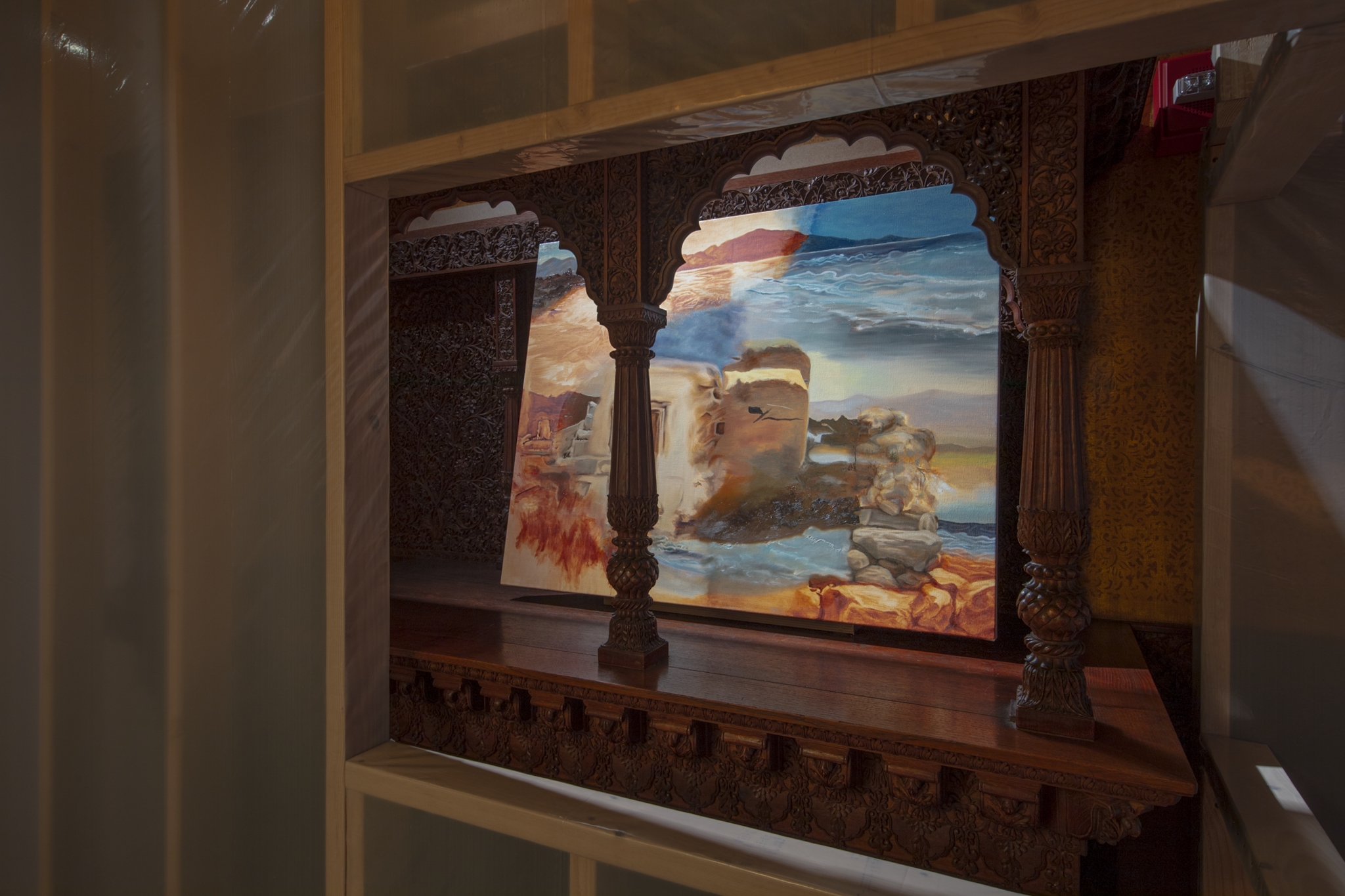
Tin Nguyen: Previously when we were in that room, that earlier exhibition had a video. From our experience of seeing the room, it always felt difficult to experience the woodwork itself because it’s such an intense environment of it. As a way to really highlight the carved teak, we thought that by covering it up and just revealing segments, the viewer could focus on what was actually visible. Part of the idea in covering up the room is this idea of controlling one’s gaze. To cover something and then to reveal something is a way of controlling the way in which one may see something.
Daniel Chew: When we did research around Lockwood de Forest, we learned he was trained as a Hudson River School painter under Frederick Edwin Church. This was before he took his trip to Ahmedabad, India, and started the woodworking company that created the hand-carved teak woods that form the interior in the Cooper Hewitt teak room.
De Forest had learned how to paint in this Hudson School River style. So when he traveled, he would make Hudson School River paintings of the places he was going to. He made many paintings from the Middle East or Egypt or Italy, and also India. The installation that we did was really trying to ask what does it mean for him to have developed his gaze through Hudson River School of painting and have that be applied to some place like India, which he was traveling in? And how is his gaze conditioned by this way of seeing that is very American? The Hudson River School painting is often talked about as being developed while ideas of manifest destiny were popular in the U.S. And the U.S was not the U.S yet and was expanding; and how these scenes of American nature created the desire to own the land and also shepherd the land towards God.
Oftentimes I think the idea was that you would paint God into the landscape, which created this mission for an American to take over the land. And so what does it mean for Lockwood de Forest to bring that imperial gaze to someplace like India, and how can we notion towards this idea of a gaze by controlling a viewer’s gaze onto even the room?
Barbara London: For the Teak Room installation for the Design Triennial, t you created four landscape paintings. I was fascinated to learn that each member of CFGNY worked on each painting. How did you do this? You’re a collective with members who obviously are not egocentric.
Tin Nguyen: With the paintings, and with all of our work, we are all involved in the making of every aspect of our project. Even if there is a form or a material that one is more familiar with, one of us will introduce it to the group and then the whole group will begin to work on it. So yes, it is something that we teach to one another and then we collectively move forward with it.
What was interesting about the idea of “art school” being introduced in India, and about Lockwood de Forest depicting paintings and setting up this wood shop, is the idea that before art schools existed in India, you didn’t decide to become an artist, you were born into it. They had a caste system.
Of course, with the introduction of the Western Art School, there is this introduction of the individual in relation to being an artist. With our paintings, we continue to kind of question that, this idea of the individual or collective making. Historically, even in the west, masters didn’t paint their paintings themselves. There were workshops that worked on a painting collectively.
Daniel Chew: With Hudson River School painting, whenever they painted landscapes, the landscapes are always an amalgamation of different things put together. So, nothing in a Hudson River School painting is a copy of a certain place. All the landscapes are made up and pieced together. But for our landscape paintings, we made basically studies of Lockwood de Forest’s work. We collaged his landscape paintings together to create these unreal scenes, where paintings from the American Northeast intersect with paintings he did in Northern Mexico, but exist in one canvas and become one landscape. In a sense, our work is close to s the hodgepodge piecemeal landscape making that Hudson School of Painting was already doing.
Tin Nguyen: That practice also related to Lockwood de Forest, and the way in which he was producing the woodworking for the rooms. For the architectural details, he would basically go around a city in India and choose different details from a varying number of places, like a mosque or a school or a public center. He would piece the details together to create the interiors.
With our project, we started with that idea. We wanted to take the way in which he was gazing upon a location, which was India, and use that same sort of methodology, but then gaze upon his own practice. So, all of our paintings are studies of his.
Then in the center of the Teak Room, we have a sculpture that is made of a series of museum collection objects, and it uses a similar methodology. We went into the Cooper Hewitt collection store rooms, and we selected objects that do not have a known maker and come from places that Lockwood de Forest was interested in or had traveled to during that time. We gathered a series of these objects and we formulated this abstract figure that sits in the center of the room. That again brings us into question of the institution and the way in which material has entered the museum and has been collected and preserved.
Barbara London: It was unusual that you were given access to the Cooper Hewitt collection store rooms. Furthermore, you didn’t select the most deluxe, desirable, vetted pieces. You chose small objects made by unknown craftspeople, and turned them into an amalgamation, a quite charming, energetic little figure set in a display case. You certainly pulled out all the stops with this little effigy.
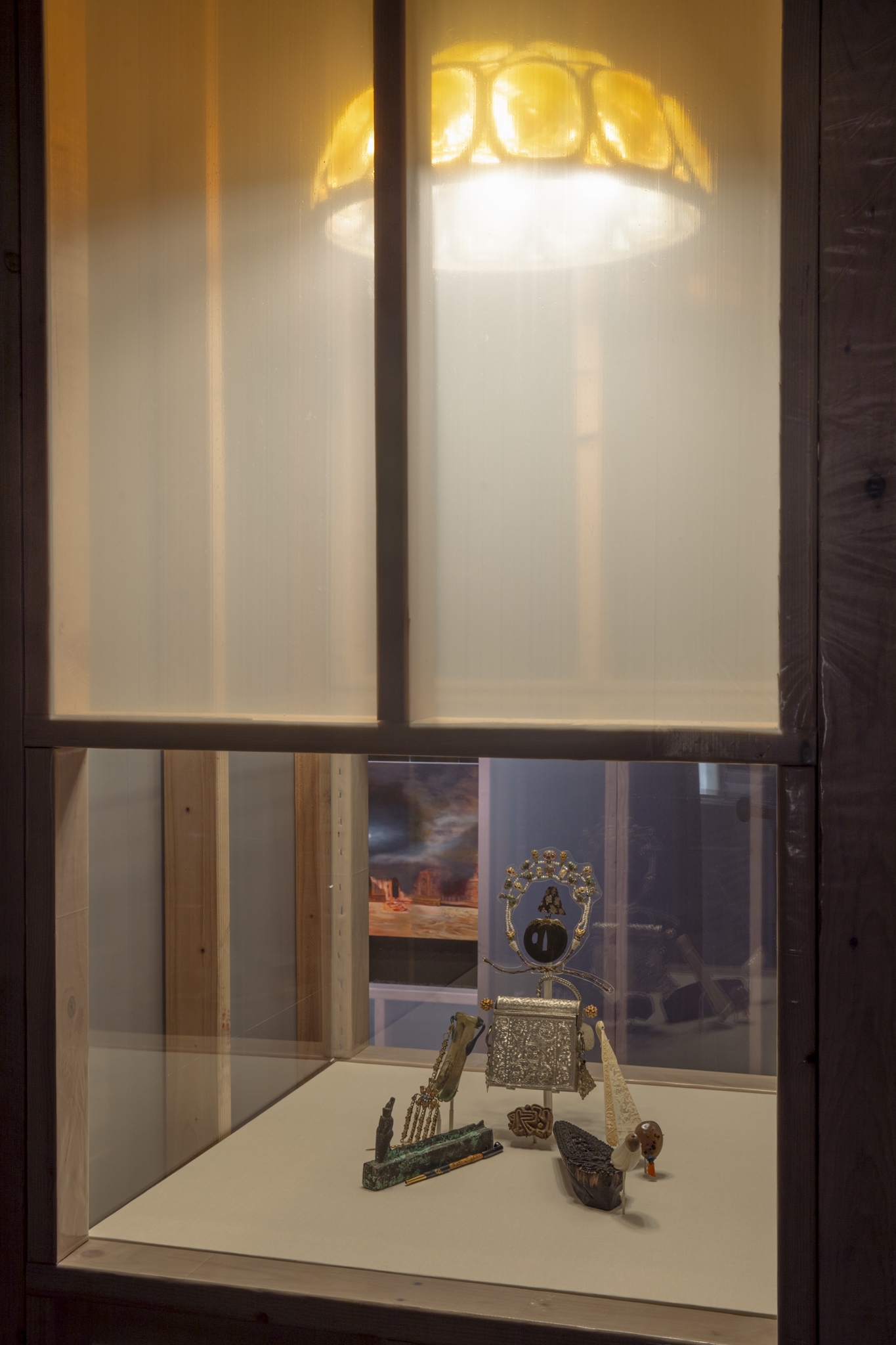
Ten Izu: We were really interested in the way that historically a class of people have collected the world. Then through the Cooper Hewitt’s collection of random tchotchkes, their collection becomes an official descriptor of how people imagine that part of the world (Asia) that they themselves have never been to.
Daniel Chew: Another biographical detail of Lockwood de Forest is that he was traveling to India to collect jewelry for Tiffany Louis Comfort and his company. A lot of that Indian jewelry now exists in the Metropolitan Museum. We are interested in the way in which de Forest was collecting and then gave it to a museum, which then put it on display and created a sense of India for an American audience.
Tin Nguyen: We forgot to mention that the Cooper Hewitt Museum building is the former Andrew Carnegie Mansion, and the Teak Room was the former family library. At the time the Mansion was built, the trend was to create an interior in a grand house that was aesthetically foreign, coming from this other place.
Daniel Chew: Like an exotic room.
The way in which you showed your worldliness was to have this exotic room.
Barbara London: As a conclusion to our conversation, I want to say that what you created in the Teak Room for the Design Triennial is very special and sheds light on your practice as a group. The installation reflects your voice, your interest in history, your interest in what an institution represents, and what design means. Thank you! I learned so much about CFGNY and its practice and about the world. I appreciate our conversation.
Tin Nguyen: We’re excited to share more aspects of our project with you because I think every time we meet with you, we’re doing something completely different in a different city. It’s been really nice to connect in that way. Over time few people really get a sense of what we do, and you are one of them. Thank you.
Ten Izu: Yes, thank you.
We try to keep it fun and fresh, so you never know what we’ll do next.
Barbara London: I love your work. It is great.
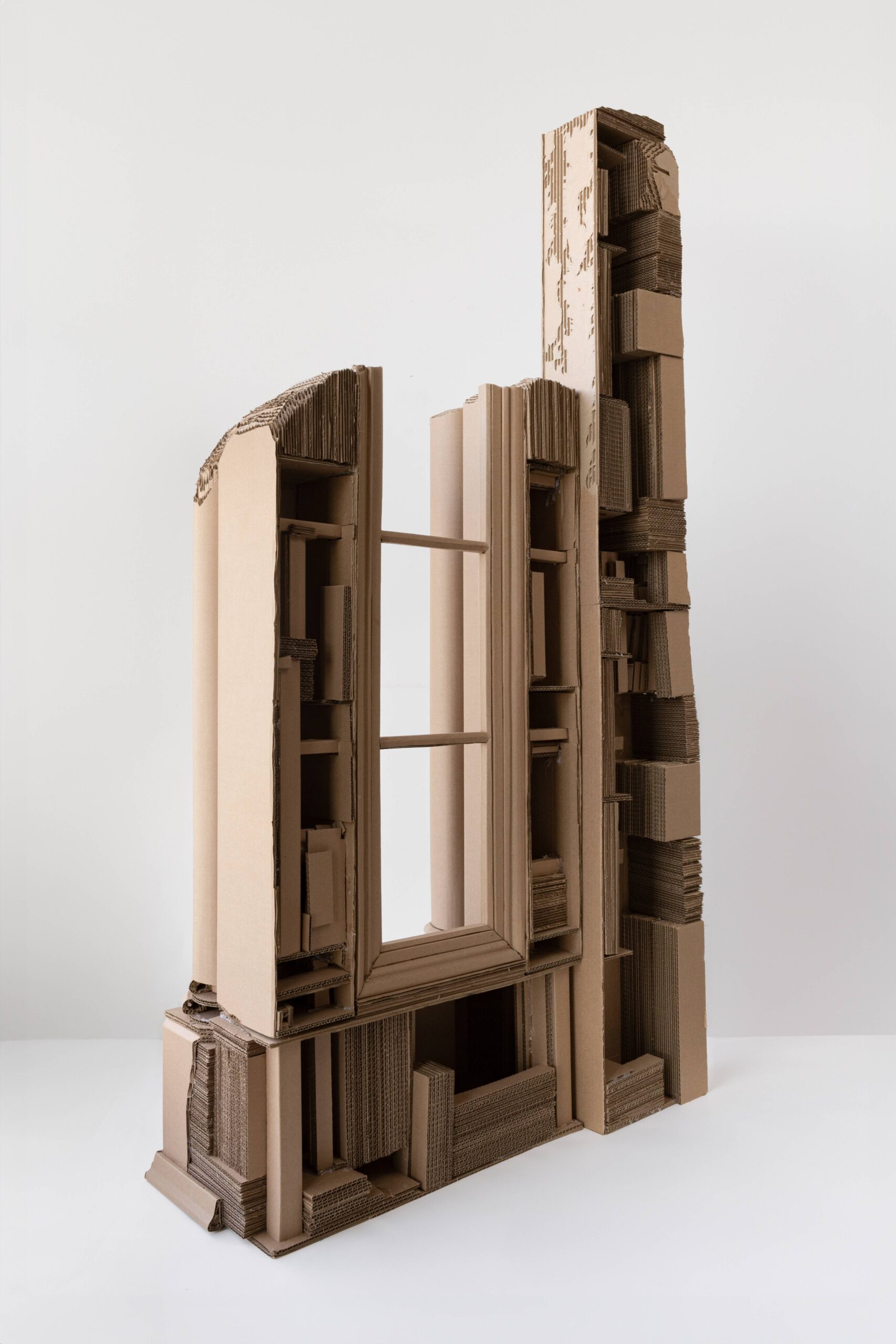
CFGNY
Cardboard, charcoal drawing, 16 x 33 x 70 inches
Support for Barbara London Calling 3.0 comes from the Richard Massey Foundation and from an anonymous donor.
The series is produced by Ryan Leahey, with audio engineer Amar Ibrahim and production assistant Sharifa Moore.
Be sure to like and subscribe to Barbara London Calling 3.0 so you can keep up with all the latest episodes. Follow us on Instagram at @Barbara_London_Calling and check out barbaralondon.net for transcripts of each episode and links to the works discussed.
The series is produced by Ryan Leahey, with production assistant Sharifa Moore. Web design by Sol Skelton and Vivian Selbo.
Special thanks to Masayoshi Fujita and Erased Tapes Music for graciously providing our music, and thanks to Independent Curators International for their help with the series. Additional thanks to Kerosene Jones and Vuk Vuković.
This conversation was recorded December 3, 2024; it has been edited for length and clarity.